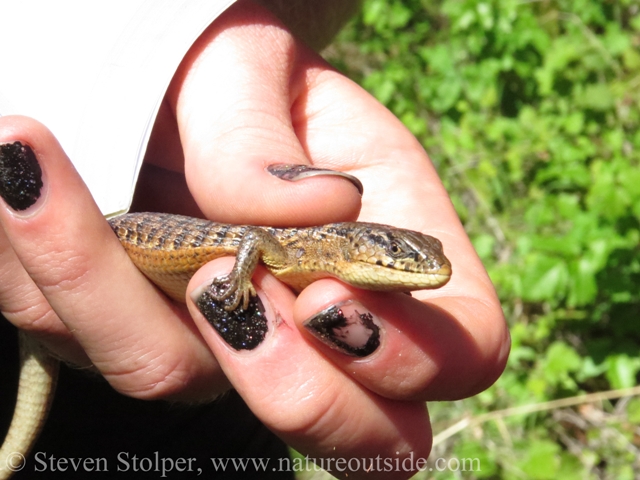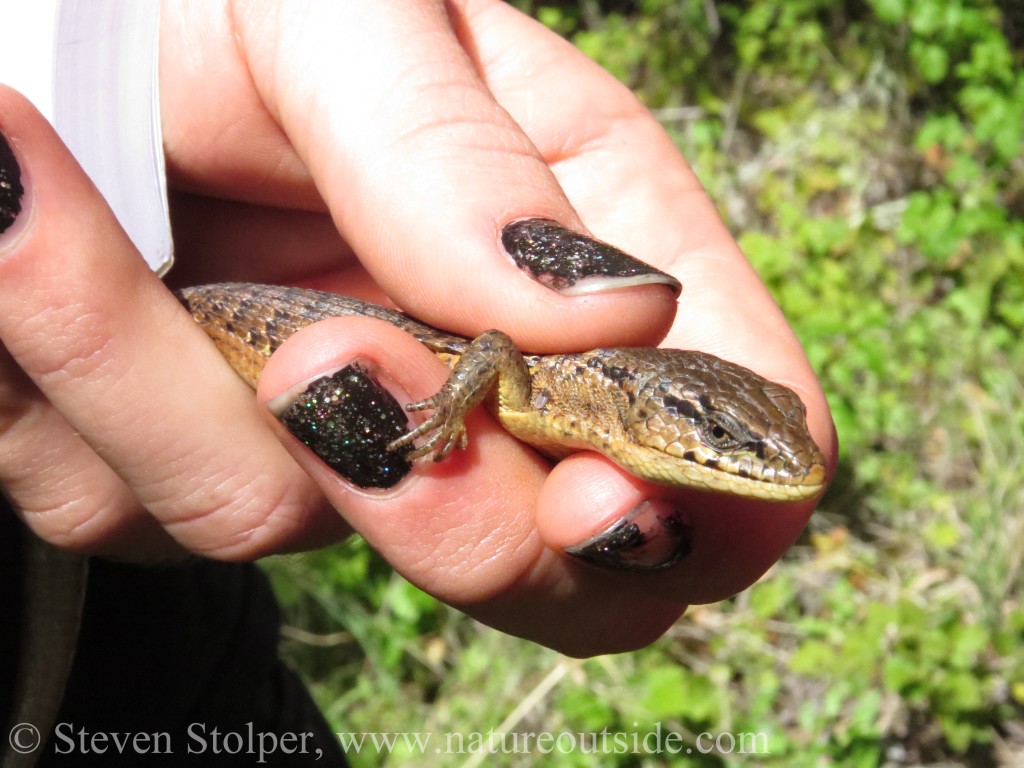I was hiking with a group this weekend through a coastal savanna (also called coastal prairie). A savanna is a grassland ecosystem where the trees are spaced so widely that the canopy does not close. Enough light reaches the ground for grasses to grow beneath the trees. The coastal savanna I visited is located among the western hills along the Pacific Ocean.
While hiking our group found a California Alligator Lizard (Elgaria multicarinata multicarinata). It was moving among the leaf litter at the edge of a stand of trees. Fortunately, there was a herpetology student among us. So we corralled the lizard to examine it. The herpetology student held it while the rest of us snapped photographs.
Did you notice the engorged tick located forward of the lizard’s front leg? As I mentioned in my post, Tick Aware, the blood of alligator lizards and western fence lizards cures Lyme Disease! It contains a borreliacidal protein that kills the spirochetes in the guts of infected ticks. So if an infected tick bites an alligator lizard, it’s cured of its Lyme Disease. So this lowly lizard is important for keeping California hikers healthy!

Notice the lateral fold
There is a lateral line that runs down the side of the lizard’s body. This is a band of small scales that separates the larger bone-reinforced scales on the back and belly. The scales create a fold on each side that can expand as needed to hold food or eggs. The scales “fold” when the extra capacity is not required.
The alligator lizard was probably named for its appearance. It has an elongated body with a very long tail, like an alligator. The tail can reach twice the length of its body if it has never broken off and regenerated. This lizard has a large head and powerful jaws.
Alligator lizards are diurnal. But they can become crepuscular and nocturnal in hot weather. Look for it in grassland, open forest, and chaparral. I also see them on the edges of mixed oak woodland. They’re secretive and hide under rocks, logs, and leaf litter.
An alligator lizard will drop its tail if it feels threatened. The tail writhes by itself for several minutes to distract potential predators. It’s rather startling to see. The tail grows back, but it takes a lot of the lizard’s energy to regenerate it. For this reason, I take care not to distress a lizard when I find one.
Mating occurs in Spring and eggs are laid sometime between May and July. The eggs hatch during late summer and early fall.
It was exciting to find the lizard and wanted to share it with you. Do you have a favorite lizard?
Related Articles on NatureOutside
For fun facts and useful tips, join the free Bushcraft Newsletter.




Leave a Comment